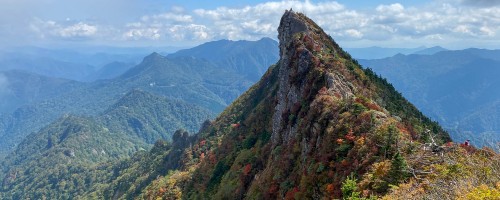 The Henro is one of Japan's most ancient and celebrated pilgrimages. The 1,200km route to 88 Buddhist temples forms a circle around the wild island of Shikoku. Recent articles in National Geographic and the New York Times reflect the growing interest in this transformational adventure among non-Japanese travelers. They capture many of the Henro's charms: the generosity of its people, glimpses of everyday life in quiet villages, stunning landscapes, and the opportunity to participate in a living tradition that retains its sense of power and mystery.
The Henro is one of Japan's most ancient and celebrated pilgrimages. The 1,200km route to 88 Buddhist temples forms a circle around the wild island of Shikoku. Recent articles in National Geographic and the New York Times reflect the growing interest in this transformational adventure among non-Japanese travelers. They capture many of the Henro's charms: the generosity of its people, glimpses of everyday life in quiet villages, stunning landscapes, and the opportunity to participate in a living tradition that retains its sense of power and mystery.
These articles do not, however, detail what is a universally-acknowledged fact among locals: a series of blows dealt by modernization and depopulation have left the future of the Henro uncertain. Japanese interest in the pilgrimage peaked in the early 19th century, but has been on a steady decline since Japan’s rapid industrialization beginning in the 1870s.
Counting only Japanese pilgrims, the Henro would seem to be a fast-fading tradition. Most who undertake the journey are retirees who do so by car or on bus tours, which became popular in the post-War era. This situation has left both temples and the economy that surrounds the Henro in dire straits, with many accommodations on the walking route shutting down for good in recent years.
International interest in the Henro, though, is seen by many locals as a light in the darkness. Local surveys suggest that up to 70-percent of pilgrims who undertake the journey on foot come from outside of Japan. Non-Japanese visitors are also the engine behind the steadily increasing infrastructure for cycling pilgrimage appearing in recent years. Their presence is a welcome boost to local economies devastated by depopulation. Locals also hope that the popularity of the pilgrimage among foreigners will inspire interest among new generations of Japanese to take it on themselves.
The newest offering from Shikoku Tours, the Walking Pilgrimage in Tokushima, has the needs of both pilgrims and the pilgrimage at its heart. Participants follow the ancient route to its first 23 temples, staying in temples and locally-run inns. At temples you’ll have the opportunity to view Buddhist treasures up-close and participate in unforgettable rituals. At pilgrim inns you’ll enjoy fresh, traditional, seasonal foods prepared with care by owners. While the course features walks of 15-20km per day, the presence of a support vehicle makes the journey uniquely accessible.
We hope that with this tour, we can be part of preserving and passing on the Henro to generations to come.
